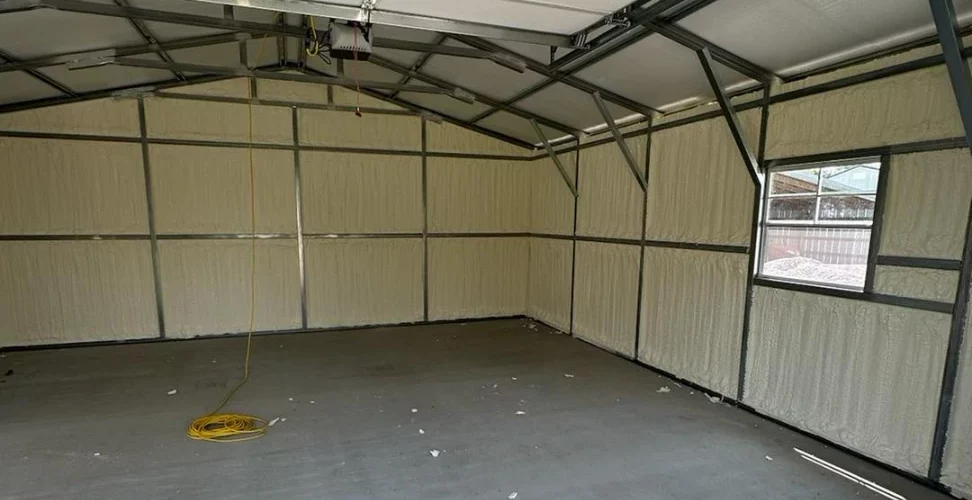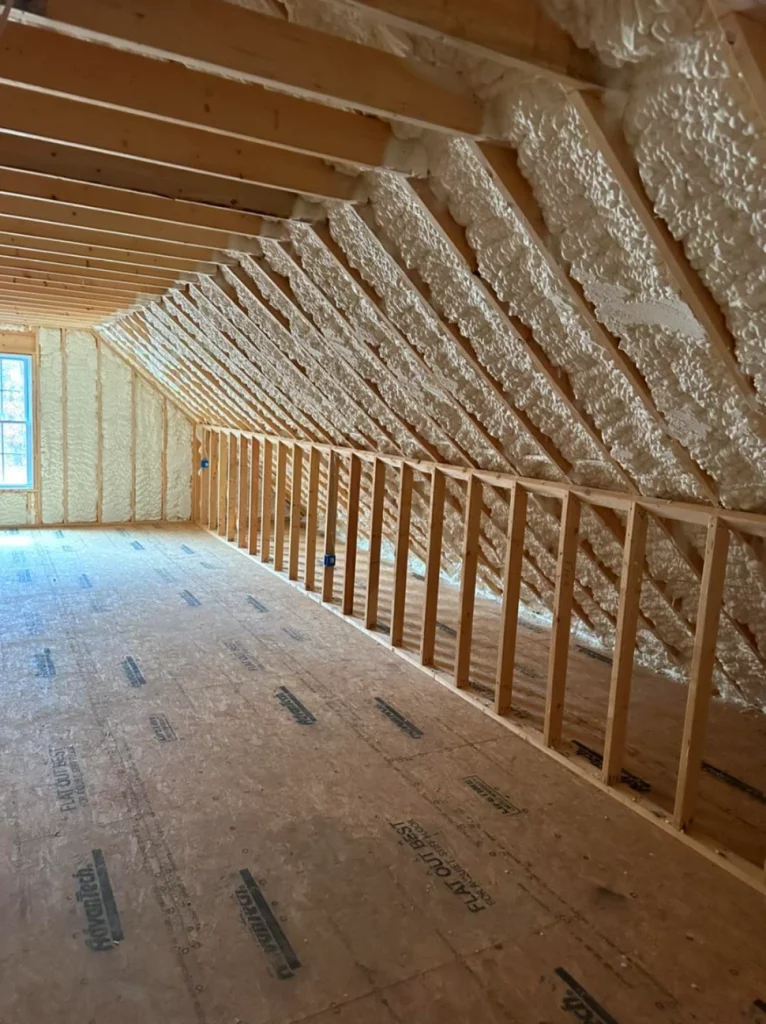
Spray foam insulation delivers superior thermal resistance and air sealing performance, which makes it particularly effective for homes in Calloway County. The region experiences a mix of humid summers and cool winters, where uncontrolled air exchange and moisture infiltration can quickly reduce energy efficiency. Spray foam forms an airtight barrier that minimizes air leaks, helping stabilize indoor temperatures throughout the year.
Unlike traditional insulation materials, spray foam actively adheres to framing cavities, rim joists, and irregular surfaces, reducing the risk of thermal bridging. This material also restricts moisture-driven mold growth, a concern in crawl spaces and older homes in the area. Armored Insulation applies spray foam in both open-cell and closed-cell forms based on structural demands and site-specific requirements. The following sections explain how this insulation type responds to local building conditions.
Spray foam insulation blocks both convective and conductive heat flow, which directly addresses Calloway County’s mixed-climate efficiency demands. It maintains performance even in high-humidity areas such as rim joists, crawl spaces, and unvented attics.
When insulating vented crawl spaces in Calloway County homes, closed-cell spray foam insulation minimizes moisture absorption better than fiberglass or batt materials.
| Feature | Spray Foam (Closed-Cell) | Spray Foam (Open-Cell) | Fiberglass Batt | Blown-In Cellulose |
|---|---|---|---|---|
| R-Value per inch | 6.0-7.0 | 3.5-4.0 | 2.9-3.8 | 3.2-3.8 |
| Air Seal Capability | Excellent | Excellent | Low | Moderate |
| Vapor Barrier | Yes | No | No | No |
| Performance in High Humidity | High | Medium | Low | Medium |
| Mold Resistance | High | Medium | Low | Low |
| Structural Reinforcement | Yes | No | No | No |
| Attribute | Closed-Cell Spray Foam | Open-Cell Spray Foam |
|---|---|---|
| Density | ~2.0 lb/ft³ | ~0.5 lb/ft³ |
| Water Absorption | <1% by volume | 5%+ by volume |
| Sound Attenuation | Moderate | High |
| Application Thickness | 1-2″ per pass | Up to 3″ per pass |
| Curing Time | Seconds to minutes | Seconds to minutes |
| Perm Rating | 1 or less (acts as vapor retarder) | 10+ (permeable) |

Applying closed-cell spray foam on rim joists during retrofit upgrades drastically reduces air infiltration in older Calloway homes built before 1980.
Spray foam insulation in Calloway County performs reliably due to its dual role as an air barrier and thermal insulator. Humidity resistance, superior R-values, and structural reinforcement make it a choice for homes facing varied seasonal demands. Matching the foam type to the location and conditions of each application area is essential.
To determine whether spray foam fits your home’s structure and insulation needs, reach out directly. Armored Insulation handles installations across Calloway County with field-tested methods tailored to local conditions. Email [email protected] or call (270) 331-4844 to speak with a specialist about the right insulation solution for your home.
Spray foam typically lasts 25+ years when correctly installed. Closed-cell options can exceed 30 years with no loss in thermal performance.
No ongoing maintenance is required. Annual inspections can help identify rare degradation in extreme moisture conditions.
Unlike batt insulation, spray foam doesn’t serve as nesting material. Closed-cell foam is also more resistant to pest intrusion.
Excessive spray depth may cause improper curing and off-gassing. A professional installer should monitor application thickness per layer.
Yes, particularly in attics, rim joists, and crawl spaces. Proper sealing can significantly improve comfort and efficiency.